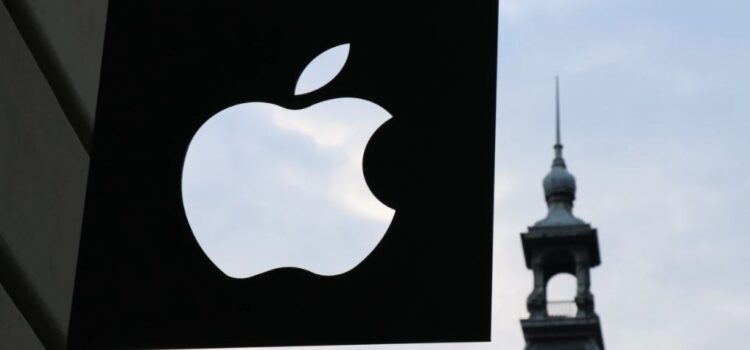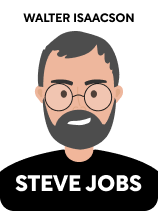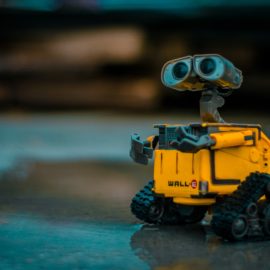

This article is an excerpt from the Shortform book guide to "Steve Jobs" by Walter Isaacson. Shortform has the world's best summaries and analyses of books you should be reading.
Like this article? Sign up for a free trial here.
How was Apple created? What made Steve Jobs and Steve Wozniak want to make computers?
Steve Jobs by Walter Isaacson gives readers an inside look into everything Apple and Steve Jobs. He explains how Apple was created, which changed Jobs’s life forever.
Check out the history of the Apple company below.
The Birth of Apple (1975-1977)
How was Apple created? It all starts with Steve Jobs and Steve Wozniak’s partnership. After coming home from India, Jobs reunited with Wozniak at a time when a larger network of computer hobbyists was forming. This wider community gave their partnership a springboard from which they would make a lasting mark on the world. Jobs and Wozniak went from nobodies to industry-shaking pioneers so quickly when Apple was created.
(Shortform note: A crucial meeting place for California’s growing electronics community was the Homebrew Computer Club, founded in Menlo Park by political activist and hobbyist Fred Moore. In two years, its members grew from 32 attendees to a mailing list of over 1,500.)
At a meeting of the Homebrew Computer Club, Wozniak watched a demonstration of the new Altair 8800 computer, the first home computing system to include a microprocessor chip. Seeing the Altair gave Wozniak the idea of putting a microprocessor into a terminal he was currently designing. It worked, and Wozniak became the first person ever to type on a home computer keyboard and see text appear on a screen.
Wozniak wanted to share his idea with the other Homebrew members, but Jobs convinced him that they could sell pre-printed circuit boards instead of giving the design away for free. The two scraped together their savings to fund their new partnership, which Jobs dubbed “Apple Computers” after an apple orchard commune he’d worked at in college.
(Shortform note: One of the keys to Apple’s success is the concept of emotional branding. Instead of merely advertising the quality of its products, such branding promotes good feelings in customers. According to Isaacson, this goes back to Jobs’s choice of the company’s name. The juxtaposition of “Apple” and “Computer” conveys a feeling of playfulness and fun.)
Wozniak and Jobs introduced the Apple I at the Homebrew Computer Club, where it caught the attention of a local computer dealer. Jobs’s parents’ garage became their first factory, where friends and family became the assembly line to manufacture the Apple I circuits.
Already thinking ahead, Jobs decided their next model should be a fully integrated system that required no assembly by the user. He intended to take the personal computer from a hobbyist’s toy to a product for the general public. He and Wozniak went into business with Mike Markkula, formerly at Intel, to fund Apple’s expansion and production costs. (Shortform note: Mike Markkula, Apple’s unsung third founder, was often thought of as “the adult in the room” to mediate between Jobs and Wozniak, though he was also a programmer and engineer.)
The Apple II debuted in 1977, kicking off the personal computer industry. (Shortform note: While Apple may have launched the personal computer into the public eye, it was not the only company in the market. Tandy’s TRS-80 was released a month after the Apple II, with the Commodore PET following in December. All three ran versions of the programming language BASIC, and are collectively known as the 1977 Trinity.)
The Revolutionary Altair
Before the invention of the microprocessor, computers were large, expensive mainframes owned by universities, corporations, or governments. Instructions would be fed to the mainframe using punch card systems or teletype terminals. A computer that could fit in a home, or even on a table, was unthinkable.
The Altair 8800 was a do-it-yourself computer kit developed by a team of Air Force veterans. It included an internal 8-bit microprocessor, and its interface was a panel of switches and lights. In 1975, Popular Electronics hailed it as “the most powerful computer ever presented.”

———End of Preview———
Like what you just read? Read the rest of the world's best book summary and analysis of Walter Isaacson's "Steve Jobs" at Shortform.
Here's what you'll find in our full Steve Jobs summary:
- A no-fluff look into the life of Steve Jobs
- How Jobs changed the technology landscape
- What it was like to work with and for Steve Jobs






